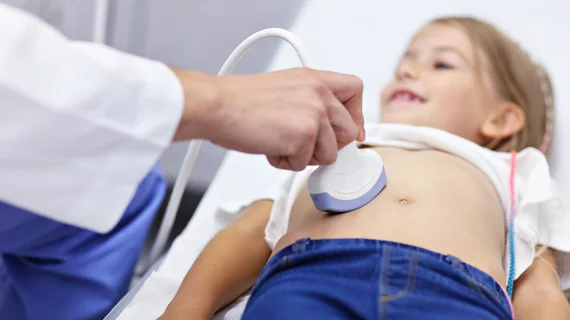Using a clinical decision support tool did not lead to widespread reductions in emergency diagnostic imaging for pediatric patients with appendicitis, according to data published Tuesday.
At one Kaiser Permanente health system, however, the tool did show a glimmer of hope, directing more appropriate CT imaging in children at low and moderate risk of appendicitis.
A team of researchers led by Anupam B. Kharbanda, MD, MSc, of Children’s Minnesota in Minneapolis, said that although their CDS tool didn’t result in significant reductions, it did show the approach may have a promising future.
“In this cluster-randomized trial, we demonstrated the feasibility and safety of an EHR-linked appendicitis CDS tool in community-based EDs,” Kharbanda and colleagues explained Feb. 9 in JAMA Network Open. “These findings suggest that more research is needed to determine whether clinical decision support tools promote more appropriate imaging in patients with acute abdominal pain,” they added later.
Providers have slowly shifted away from using computed tomography to evaluate suspected appendicitis, favoring the lower radiation exposure inherent with ultrasonography. Despite this, CT utilization remains high for these children.
With this in mind, the team combined their previously developed pediatric risk calculator (pARC) and a decision support system (AppyCDS), integrating both into the EHR at 17 community-based general EDs in California, Minnesota and Wisconsin. Of these, six were HealthPartners facilities in Minnesota and Western Wisconsin, and 11 Kaiser Permanente Northern California facilities.
The AppyCDS tool prompts clinicians to screen patients at risk of appendicitis and recommends further steps based on calculated risk or pARC scores. For the latter, a higher percentage suggests a greater risk of appendicitis, with a score of 15% or lower indicating less risk compared to 16% to 50%.
Overall, the group included 5,940 patients who visited the ED with pain in their right side between October 2016 and July 2019. Emergency departments were randomized to use the AppyCDS tool with pARC scoring or usual care without both.
Kharbanda and colleagues didn’t see an overall reduction in CT or ultrasound utilization across the emergency departments, but for the 11 Kaiser Permanente Northern California EDs, AppyCDS reduced all forms of imaging in children with a pARC score of 15% or less. It also dropped CT use in patients with a score between 16% and 50%.
The investigators also tested for safety and cost outcomes but found no difference between the EDs using decision support and those that did not.
Based on their findings, the researchers noted that shared decision-making between families and clinicians, based on pARC scores, may be needed to truly optimize imaging in pediatric patients with potential appendicitis.

